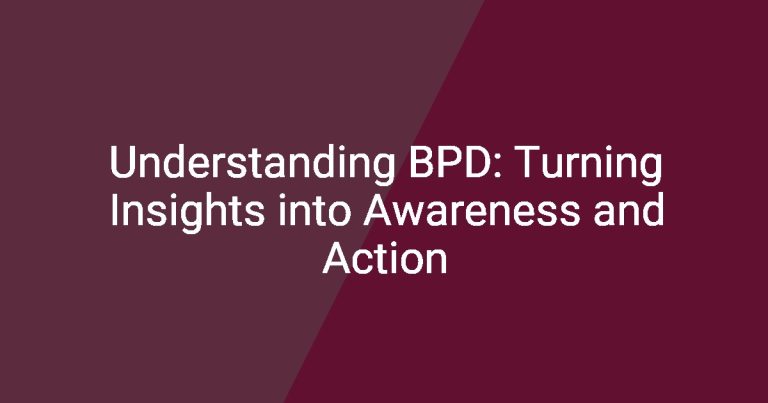Earrings are a staple accessory for many, transcending age and culture. Whether it’s a subtle stud or an eye-catching dangle, earrings help express individual style. Despite their popularity, many people experience discomfort or pain in their earring holes. Understanding the reasons behind why earring holes hurt is crucial for maintaining not only comfort but also overall ear health.
Understanding Earring Holes
Anatomy of the Earlobe
The earlobe, made primarily of soft connective tissue and fat, is rich in blood vessels and nerve endings. This unique structure plays a vital role in the sensitivity and pain associated with earring holes. Any disruption to this area can lead to significant discomfort, highlighting the importance of understanding the anatomy of the earlobe.
Types of Earrings
Earrings come in various styles, each impacting the ears differently:
– Studs: Generally the most comfortable and least likely to cause discomfort.
– Hoops: Can snag on objects, leading to potential injury or pain.
– Dangles: Offer a fun aesthetic but may cause strain on the piercing.
– Clips: Suitable for non-pierced ears, but they can pinch and cause discomfort.
Common Causes of Pain in Earring Holes
Understanding the various reasons behind the pain in your earring holes is essential for effective treatment.
Infections
Infections are a common issue with pierced ears. Signs of infection include:
– Redness and swelling around the piercing site
– Discharge with a foul smell
Common pathogens associated with earring-related infections include *Staphylococcus aureus* and *Pseudomonas aeruginosa*. If you notice symptoms indicating an infection, it’s vital to seek treatment promptly.
Allergic Reactions
Many people are unaware that certain materials can trigger allergic reactions. Nickel is a well-known allergen found in many inexpensive earrings. Symptoms of allergic reactions may include:
– Itching or burning sensation in the earring hole
– Inflammation or redness
If you suspect you have an allergy, consider switching to hypoallergenic materials such as surgical steel or titanium.
Trauma or Injury
Improper handling of earrings or snagging them on clothing can lead to trauma. The pain experienced may be temporary; however, repeated injuries can result in long-term damage such as:
– Keloids (overgrowth of scar tissue)
– Scarring that can affect the appearance and health of the earlobe
Poor-Quality Earrings
Cheap earrings made from low-quality materials can aggravate the ears. Such materials may contain harmful substances that can cause irritation. Wearing non-hypoallergenic earrings can lead to various health risks, including painful earring holes.
When to Seek Medical Attention
Recognizing when to seek medical help is essential for maintaining ear health.
Persistent Pain
If your earring holes hurt for an extended period, it’s time to evaluate the situation. As a general guideline, discomfort that lasts more than a week should be monitored. Discuss with a healthcare professional if the pain:
– Is severe
– Is worsening over time
– Interferes with daily activities
Signs of Infection
It’s important to distinguish between normal healing and the onset of infection. Seek medical attention if you experience:
– Increased swelling
– Pus or discharge
– Fever accompanying ear pain
Recommended steps involve cleaning the area and possibly initiating antibiotic treatment based on a physician’s advice.
Severe Allergic Reactions
Occasionally, allergic reactions can become severe, leading to anaphylaxis. Symptoms may include:
– Difficulty breathing
– Swelling of the tongue or throat
– Rapid heartbeat
If you observe these symptoms, it’s crucial to call emergency services immediately.
Prevention and Care Tips
Preventing pain associated with earring holes involves conscientious choices and practices.
Choosing the Right Earrings
Opt for hypoallergenic earrings crafted from materials such as:
– Gold (14K or higher)
– Surgical steel
– Titanium
Being material-conscious can greatly reduce the likelihood of experiencing discomfort.
Proper Care for Pierced Ears
To care for your pierced ears, follow these cleaning recommendations:
– Use saline solutions or alcohol wipes to clean around the piercing.
– Avoid touching your earrings with unwashed hands.
– Change earrings regularly to allow the holes to breathe.
Best practices also include being gentle when inserting or removing earrings to prevent unnecessary trauma.
Listening to Your Body
Always pay attention to what your body tells you. If you experience pain during or after wearing earrings, consider:
– Taking them out for a while
– Giving your ears a break before trying another pair
Home Remedies for Sore Earring Holes
For those experiencing mild discomfort, there are several home remedies available.
Natural Remedies
Certain natural remedies can be effective in alleviating discomfort in earring holes:
– Tea tree oil: Known for its antiseptic properties, it can help reduce inflammation.
– Aloe vera: Its soothing properties can help ease irritation.
Moreover, a gentle massage around the ear may improve blood flow and alleviate pain.
Over-the-Counter Solutions
There are over-the-counter options you can consider for discomfort, including:
– Antihistamines: Useful for managing allergic reactions.
– Anti-inflammatory creams: These can help in reducing pain and swelling.
Consult a pharmacist if you have any questions regarding these treatments.
Conclusion
Experiencing pain in your earring holes can be concerning, but understanding the underlying causes can guide you toward the appropriate solutions. From preventing infections to choosing the right materials, acknowledging your body’s signals is crucial. Prioritize ear health, and do not hesitate to seek professional guidance when needed.
| Cause of Pain | Symptoms | Recommended Actions |
|---|---|---|
| Infections | Redness, swelling, discharge | Seek medical attention, keep the area clean |
| Allergic Reactions | Itching, inflammation | Switch to hypoallergenic earrings |
| Trauma or Injury | Pain, potential keloids | Handle earrings carefully, consider medical advice |
| Poor-Quality Earrings | Irritation | Invest in higher-quality materials |
Frequently Asked Questions (FAQ)
1. What causes earring holes to hurt after initial piercing?
Initial discomfort is common due to the sensitivity of the earlobe. Over time, this should subside as the piercing heals.
2. Can I wear earrings if I have sensitive skin?
Yes, opt for hypoallergenic materials like surgical steel or titanium to reduce the risk of irritation.
3. How can I treat an infection in my ear piercing?
Keep the area clean and consult a healthcare professional if you notice severe symptoms.
4. What should I do if my earring hole is throbbing?
This may indicate an infection or an allergic reaction; seek professional advice if the pain persists.
5. Are there specific earrings that are better for sensitive ears?
Choose earrings made from gold (14K or higher), surgical steel, or titanium.
6. How often should I clean my piercings?
Regular cleaning is suggested, especially in the initial healing period, at least twice a week.
7. Can stress or hormonal changes affect earring hole pain?
Yes, stress and hormonal fluctuations can influence your body’s sensitivity, including in pierced areas.
8. How do I prevent keloids from forming?
Avoid trauma to the piercing site and be cautious when handling earrings.
9. When should I switch earrings after getting them pierced?
You should wait at least six weeks before switching to a different pair, depending on how your piercing heals.
10. Is it safe to use essential oils on earring holes?
While some essential oils like tea tree oil can be beneficial, always do a patch test and consult a professional if unsure.
Additionally, for more information and professional recommendations, consider checking reputable sources such as [American Academy of Dermatology](https://www.aad.org) and [Mayo Clinic](https://www.mayoclinic.org).







